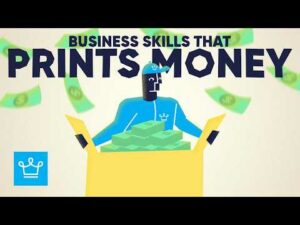Why Companies Are Quietly Laughing Off Tariffs—And What That Means for Your Portfolio
Ever find yourself staring at a quarterly earnings call wondering if you missed some secret handshake of clarity? Lately, the collective corporate mood seems to be one big cosmic shrug — picture that delivery guy shrugging in the photo above, as if to say, “Tariffs? Forecasts? Who knows anymore!” Honestly, these new U.S. tariff policies have tossed a wrench—or maybe a whole toolbox—into the finely tuned gears of business forecasting. Companies are pulling back or hedging their 2025 guidance with a level of uncertainty that’s downright contagious. So, what does a CFO’s crystal ball look like these days? Well, more like fogged glass mixed with a smidge of poker face.
It’s an odd dance, watching businesses wrestle with policy twists that make traditional foresight feel like guessing the weather next year. And no, it’s not just idle hesitation—it’s strategic recalibration. Some firms wave the white flag, others crunch numbers with caution, and a few hold onto long-term goals like a lifeline. The question is, can investors still trust these forecasts, or have we all collectively agreed that sometimes, the best takeaway from a quarterly call is simply… a shrug? Let’s dive into how a few big names are tackling this tariff-induced riddle, each with their own unique style of saying, “Good luck, future!”

Earlier this month, we told you about some of the perplexed responses in companies’ disclosures regarding the federal government’s tariff policy. Weeks later, issuers continue to express their befuddlement over the impact of U.S. trade policy on their forecasts. It’s hard to think of a time when the shrug emoji has felt more apt for quarterly earnings calls.
Just as tariff policy is contributing to hesitation in business decision making, it’s also giving companies pause in offering earnings guidance for 2025. In response to evolving trade dynamics and mounting uncertainty around U.S. tariffs, several public companies are either pulling back their projections or significantly qualifying them. Their hesitance to forecast their performance is quickly transforming a once-crucial aspect of investor relations into more of an afterthought.
Here is a closer look at how four companies have responded in recent disclosures, each representing a distinct strategy for navigating the tariff-induced volatility.
Steve Madden
Footwear and fashion brand Steve Madden opted for clarity through withdrawal. In a Form 8-K issued on May 7, the company bluntly stated it was withdrawing its 2025 financial guidance “due to macroeconomic uncertainty related to the impact of new tariffs on goods imported into the United States.”
Simple enough. The shoemaker’s purposeful retreat underscores the unpredictability currently looming over global supply chains and consumer markets.
General Motors
Rather than abandoning guidance altogether, General Motors chose to incorporate a broad estimate of the impact of the tariffs. Issued on May 1, the automaker’s latest quarterly filing revised its outlook to account for what it projected to be a hit on the order of $4 billion to $5 billion “based on the current regulatory and policy environment.” Perhaps investors will appreciate GM’s effort to at least provide a frame of reference for what it believes is coming.
Southwest Airlines
We could call Southwest Airlines’ approach in its April 23 Form 8-K a middle ground. The company declined to reiterate its broader 2025 and 2026 guidance, citing “current macroeconomic uncertainty” and “recent and short-lived booking trends.” However, it reaffirmed a key target: a $1.8 billion incremental EBIT contribution for 2025.
The takeaway for the public: Despite Southwest’s caution about the future, the company is staying committed to its long-term strategic objectives.
Pfizer
In a Form 8-K issued on April 29, pharmaceutical giant Pfizer reaffirmed its previous guidance. However, the drugmaker acknowledged that it “does not currently include any potential impact related to future tariffs and trade policy changes, which we are unable to predict at this time.” In essence, the company flagged tariffs as a known unknown.
***
Overall, it seems fair to say one result of the recent tariffs is that they have added new complexity quarterly earnings communications. Think of it as a symptom of a fundamental challenge companies are widely acknowledging: Forecasts have become harder to make and even harder to trust. What was once a bedrock of transparency and accountability in corporate governance has turned into a gamble in the context of a shifting policy landscape.
In other words, shrug emoji.


















Post Comment